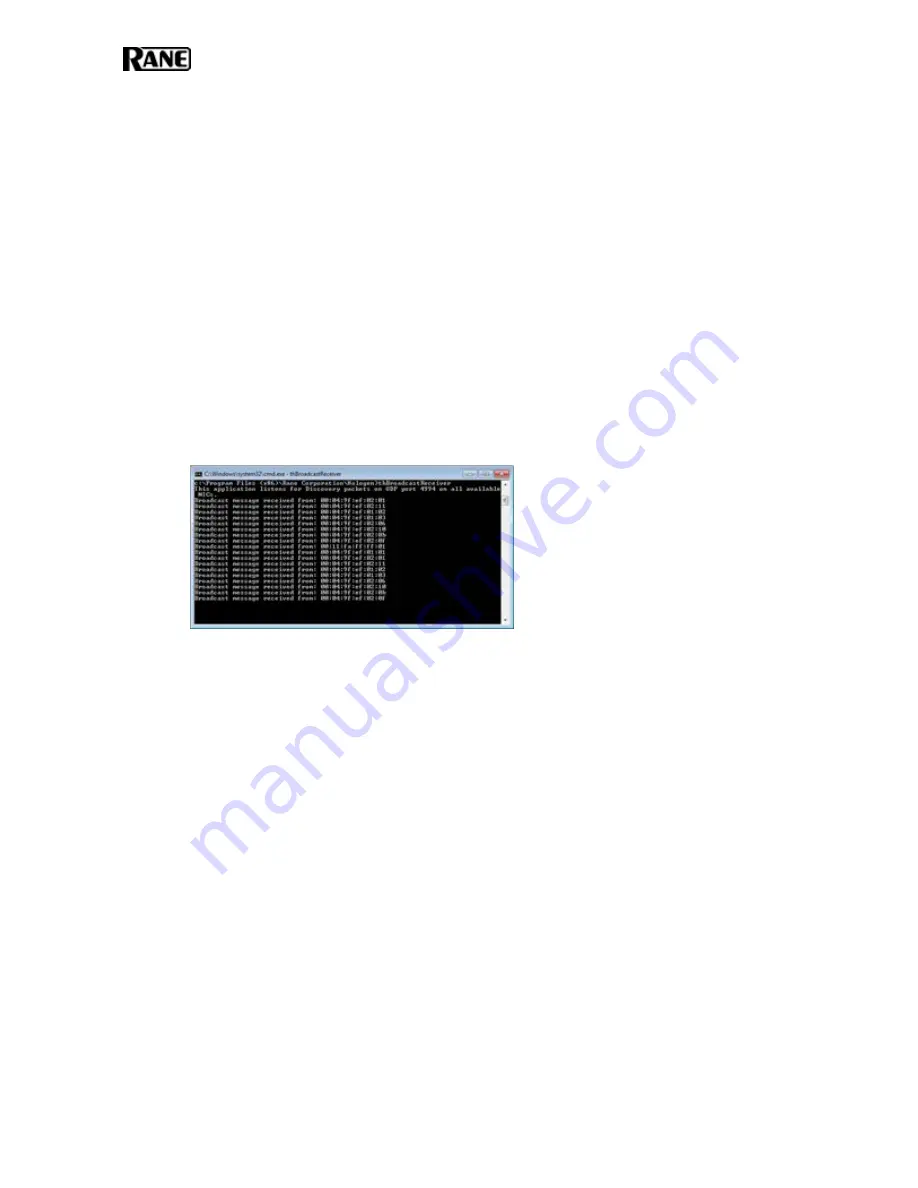
If RaneLink II fails to start after trying all the above options, it’s time to call Rane (see"Rane
Technical Support" on the facing page). If you are familiar with the Windows Event Viewer, view-
ing any messages related to RaneLink II may shed some light on the problem. However, we
highly recommend calling Rane for assistance.
6. Verify that advertisements from the HAL are reaching your PC.
Shipped with Halogen is a handy tool called
thBroadcastReceiver
, which is a command line appli-
cation that shows if your PC is receiving UDP broadcast announcements from the HAL device(s)
on the network. To run this tool, do the following:
1. Open a command box:
Windows XP:
Click Start, Run, and then type
cmd
.
Windows Vista or Windows 7:
Click Start, and then type
cmd
in the Search box.
2. At the prompt, type
thBroadcastReceiver
. If the NIC (Network Interface Card)
on your PC is receiving UDP advertisements from one or more HAL devices on the local
network, the messages will appear in the command box:
If these broadcast messages do not appear, this indicates a connectivity problem and you
will not be able to connect to a HAL device on the local network until the problem is
corrected. In fact, no HAL device will even appear in the
Connect to Device
dialog box.
Try power cycling the HAL and then running thBroadcastReceiver again.
7. Verify that the correct network interface card (NIC) is being used.
If the HAL is not found after power cycling, verify that the computer’s link-local IP address
intended for use by the HAL is on the network interface card (NIC) controlling the connection to
the HAL. To guarantee that the correct NIC is used, you can try disabling all other NICs on the
PC except for the one connected to the same network as the HAL, and then restart the PC.
Halogen establishes a link-local IP address for use in establishing communications with the HAL.
Because most computers contain multiple NICs, it is possible that the link-local address has been
assigned to the wrong NIC or assigned to the wrong route table. You can determine if this prob-
lem exists by following the procedures below:
l
To determine if the link-local IP address has been assigned to the proper NIC:
Windows XP:
Click Start, click Control Panel, double-click Network Connections, click the
network connection on which the HAL resides, and then view the settings for this NIC in
the Details box displayed in the lower left corner. Verify that the first two numbers of one of
the IP addresses are 169.254. The second two numbers can be anything between 0 and 255.
HAL SYSTEM INSTALLATION GUIDE
56























